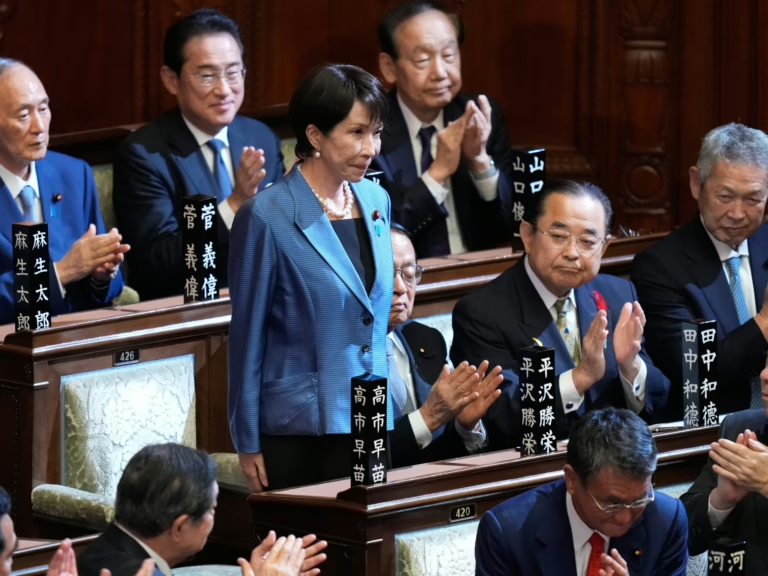Secured through a last-minute alliance, the new leadership faces a fragile parliamentary balance, raising concerns over governmental stability.
Published On 21 Oct 2025
In a historic first, Japan’s parliament has appointed Sanae Takaichi, an ultraconservative figure, as the country’s inaugural female prime minister.
A close ally of the late Shinzo Abe, Takaichi secured her position with 237 votes out of 465 in the lower house on Tuesday, officially confirming her leadership role.
This outcome was shaped by a last-minute alliance forged between her Liberal Democratic Party (LDP) and the right-wing Japan Innovation Party (JIP), also known as Ishin, on Monday. Despite this coalition, the government remains two seats shy of a parliamentary majority, signaling potential volatility ahead.
Takaichi succeeds Shigeru Ishiba, concluding a three-month period of political deadlock following the LDP’s significant electoral setback in July, which disrupted the party’s long-standing dominance in post-war Japan.
Her ascendancy represents a significant milestone in a nation where political power has traditionally been male-dominated. Nevertheless, her administration is anticipated to adopt more conservative stances on immigration and social policies, with limited prospects for advancing gender equality or embracing diversity.
Known for opposing progressive reforms, Takaichi resists initiatives aimed at empowering women, supports maintaining male-only succession within the imperial family, and rejects both same-sex marriage and the option for married couples to retain separate surnames.
The LDP’s previous coalition partner, the centrist and Buddhist-backed Komeito party, withdrew support over concerns about the LDP’s commitment to combating corruption.
“Ensuring political stability is crucial at this juncture,” Takaichi stated during the coalition agreement signing with JIP leader and Osaka Governor Hirofumi Yoshimura. “Without a stable government, advancing economic reforms and diplomatic efforts is impossible.”
Yoshimura clarified that JIP members will not assume ministerial roles in Takaichi’s Cabinet until the partnership with the LDP is firmly established.
After enduring years of deflation, Japan now faces rising inflation, which has sparked public dissatisfaction and bolstered support for opposition factions, including far-right groups.
Mirroring Abe’s approach, Takaichi is expected to prioritize increased government expenditure to stimulate the sluggish economy. This anticipation has triggered a “Takaichi trade” phenomenon, propelling the Nikkei stock index to record highs, most recently on Tuesday.
However, concerns linger among investors regarding the government’s capacity to finance additional spending, given Japan’s debt burden far exceeds its annual economic output.
Following the lower house’s endorsement, the upper house-though less influential-also approved Takaichi’s appointment. She is set to be officially sworn in as Japan’s 104th prime minister on Tuesday evening.
Facing imminent challenges, Takaichi prepares for a critical policy address later this week, upcoming discussions with U.S. President Donald Trump, and participation in regional summits.






















